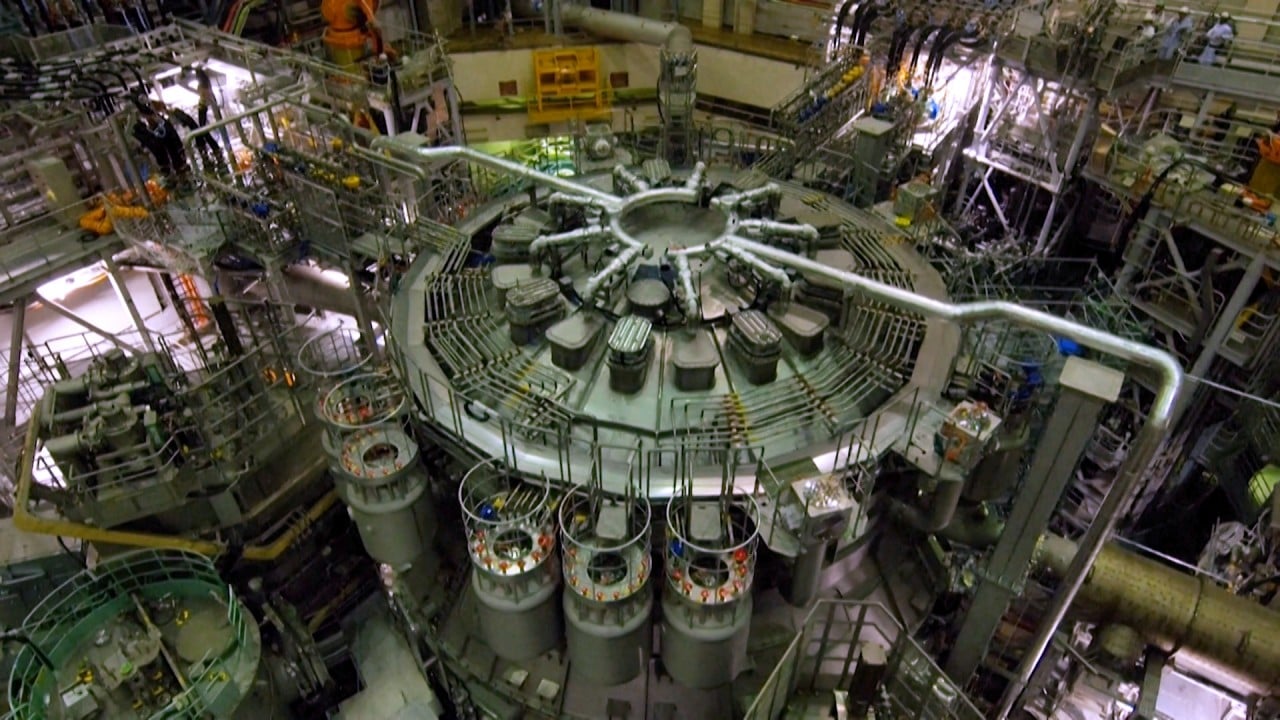
Nuclear fusion reactors a step closer to being economically viable after scientific breakthrough
- In experiments, Chinese and US researchers have overcome two of the main challenges with making fusion energy economically viable
- Using a tokamak reactor, scientists created a density gradient which allowed plasma to reach a density high enough for commercial goals
The new system could help experimental fusion reactors around the world reach a plasma density high enough to meet commercial fusion goals.
“Fusion energy is the ultimate energy source for humanity,” the researchers wrote in a paper published in peer-reviewed journal Nature on April 24.
One way to achieve fusion is by heating the hydrogen isotopes deuterium and tritium to extremely high temperatures – hotter than the sun’s core – to create plasma.
There are several types of confinement devices being developed to do this, including the tokamak design.
“The tokamak approach, utilising a toroidal [doughnut-shaped] magnetic field configuration to confine a hot plasma, is one of the most promising designs for developing reactors that can exploit nuclear fusion to generate electrical energy,” the researchers wrote.
In tokamak designs, plasma is confined by a doughnut-shaped magnetic field to control the extremely high temperatures and to keep plasma density high in order to allow collisions between constituents to occur, according to Eurofusion, a consortium of fusion research institutes in the European Union.
But in trying to create an economically viable reactor with a high energy yield, a major challenge scientists have faced has been getting the plasma to an average density above an empirical limit called the Greenwald density, according to the paper.
When approaching the Greenwald density limit, a phenomenon occurs where there is a decrease in confinement quality and even a “sudden, complete loss of plasma energy”, the team wrote.
But during experimentation at the DIII-D tokamak in San Diego operated by General Atomics, the researchers discovered a new method which saw the average plasma density reach around 20 per cent above the Greenwald limit for 2.2 seconds.
They achieved this by creating a density gradient, where the plasma density at the core of the doughnut was higher than at the edges, allowing for stability, according to the paper.
An operating system that can achieve both these goals has not been verified in previous experiments, the researchers said.
“The operating regime we report supports some critical requirements in many fusion reactor designs all over the world and opens a potential avenue to an operating point for producing economically attractive fusion energy,” the paper said.
The researchers noted that further work is needed to address other issues relating to fusion pilot plants in the future.



